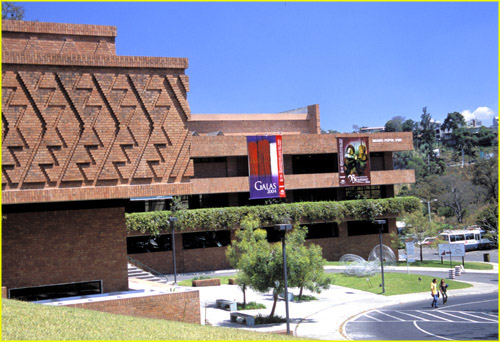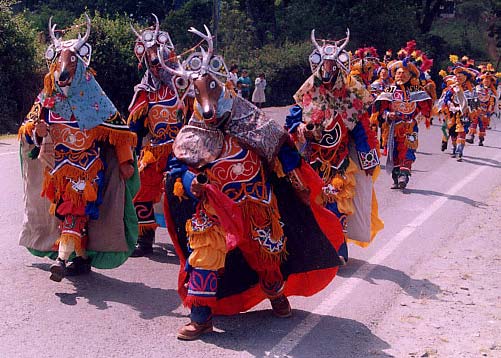
The colorful Republic of Guatemala is located in Central America, bordered to the south by the Pacific Ocean, southeast by Honduras and El Salvador, Belize to the east and north and west by Mexico. It offers a wide range of places to meet their visitors, as the wonders of the Central American jungle and the opportunity to attend various festivities Catholic-Mayan.
Climate:
Guatemala’s climate is very good throughout the year, making it possible that any time is a good option to visit the country. The greatest amount of rainfall is concentrated between May and November, and the variations that are not too many are given according to altitude. In the north the weather is warm and tropical, with more rain between May and September, the northeast and coastal regions are hot, with a dry season (November to April) and rainy. In the highlands, including Guatemala City and Antigua has a pleasant climate with less rainfall at the coast and cooler nights.
Important Information:
To enter Guatemala most visitors do not need a visa or a tourist card. You only need a valid passport, but cannot stay more than 30-90 days. In case you are thinking of a longer stay, please consult with a Guatemalan embassy or consulate before traveling.
The official currency is the quetzal, but the U.S. dollar has become a second official currency, so widely received as the first. Traveler’s checks (preferably U.S. dollars) and major credit cards are widely accepted. The change in cash is not easy, but it is more risky than the checks. It is recommended not to change money on the street or in informal jobs. ATMs are abundant and largely accept Visa and American Express (more narrowly, MasterCard and Diners Club).
It is recommended to leave a 10% tip and it is customary to give gratuities to tour guides, the hotel staff and waiters if the service has not been included in the bill. Taxi drivers do not expect tips.
Tourist Attractions:
Guatemala City, located on a large plateau surrounded by cliffs, in one of the largest in Latin America. The city is divided into eight zones and is an excellent starting point for various tours around the country. In zone 1, you can visit the Plaza Mayor, which has a very Spanish colonial style, the National Palace, the Metropolitan Cathedral and the central market. To the north of this area is worth visiting Minerva Park. In the area there are 10 interesting museums such as the Popol Vuh and Ixchel. The area 13 cannot miss the National Museum of Archeology and Ethnology and the Modern Art or the ruins of the Mayan site of Kaminaljuyú. The nightlife of the city is concentrated in the Zona Viva.

Antigua, the former capital, is one of the most beautiful cities in Latin America, is located between three volcanoes Acatenango, Fire and Water, and still retains some of its colonial buildings. Here it’s worth seeing the churches of La Merced, San Francisco and the Capuchin who is now a museum. You can also visit the House K’ojom, which houses a museum of music and ritual objects of Mayan culture.
Panajachel, attracts visitors with a volcanic cone covered with water, the boiler of Lake Atitlan. Since the city can make visits to indigenous villages of the surroundings. It also recommends making a day trip to Santiago Atitlan where there is a god, Maximón, who smokes cigars and the inhabitants are noted for their colorful clothes. Solola is a town whose square rebozo commercial activity during the market days. Palpalá of Santa Catarina and San Pedro de la Laguna are two people who give a clear idea of local traditions.
Flores, a city located in the jungle area of an island northwest of Lake Petén Itzá is connected by a bridge with the city of Santa Elena, on the coast. In this city you can visit the plaza, church and government center, plus boat trips to see the settlements of the lagoon and visit the limestone caves of Actun-Can.
Among the mysterious mists of the highlands is Chicastenango, a city surrounded by mountains and valleys that are still maintained as an important commercial center. Worth a stay Sunday to take advantage of the picturesque market and know the syncretic Mayan-Christian religious rites there. The best places to witness these rites are the shrine of Pascual Abaj and around the Church of Santo Tomás, erected in honor of the Mayan god of the earth. It is also a good option to visit the Museo Regional.

Quetzaltenango (Xela), southeast of Guatemala, is an important commercial center and an excellent starting point for excursions to nearby villages, which are known for their hot springs and handicrafts, as Zunil, Momostenango Alto and San Francisco. Moreover, in the vicinity too, can enjoy the baths are natural steam vapor in the Sources and Georgina. Some places to visit in the city’s main square and surrounding buildings, markets and Minerva Park.
Festivals:
The festivities of this country have an interesting Mayan-Christian syncretism that is worth knowing. Among the festival highlights is that the Holy Week, especially in the city of Antigua and Rabin Ajau of Mayan origin, between 21 and July 26 in Verapaces. It is also worthwhile to witness the celebrations of Independence Day, the St. Thomas and All Saints.

2 Responses to “Guatemala, much to discover!”
Leave a Reply
You must be logged in to post a comment.
abril 5th, 2009 at 7:10 pm
Muy interesante la información que das sobre Guatemala el pais de la eterna primavera..
Espero pongas más cosas sobre ella mas adelante 😉
noviembre 26th, 2009 at 12:46 am
There is one thing I do not agree that they put here on Guatemala city. That is that Guatemala city is not only divided into eight zones, Guatemala city goes from zone 1 through zone 21.